Sprawling with centuries-old buildings and a host of museums, Munich - the capital city of Bavaria is the third largest city in Germany after Berlin and Hamburg. Much of the town is steeped in history and just 16 km away from the infamous Dachau Concentration Camp.
If you’re in Munich, it would be ideal to plan a trip to Dachau Concentration Camp. This could be a somber experience that will leave a lasting impression on you and serves as a grim reminder of destruction wreaked by political powers in the wrong hands.
Why Visit Dachau Concentration Camp?
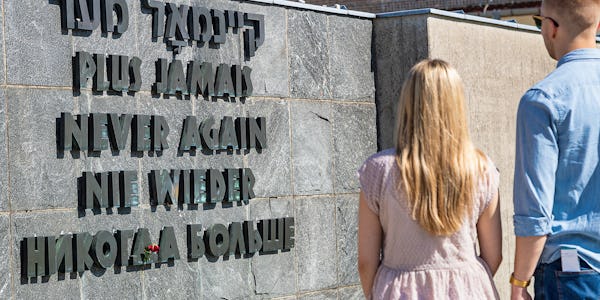
The Dachau Concentration Camp tour will prove to be a surreal experience, even to those who don't know much about the Nazi era. Dachau was the first of many concentration camps opened in 1933 on the grounds of an abandoned munitions factory. Spearheaded by Heinrich Himmler who was among the chief architect of the Holocaust and Theodor Eicke who was appointed commandant of the concentration camp, Dachau was primarily intended to hold political prisoners. However, it functioned as a forced labor camp for Jews, homosexuals, convicted Germans, and others. The prisoners were brought here from all of Germany and were greeted with the motto “Work will make you free”, which was essentially propaganda meant to trivialize the concentration camp as a labor/ re-education camp when in reality it was a forced labor induced torture camp. What’s horrific is that Dachau went on to become the prototype for future extermination camps that sprung across Germany.
The Dachau Concentration Camp was functional for almost twelve years and recorded 32,000 deaths while thousands of them were undocumented, before being liberated by American forces in April 1945. This training ground for terror saw blatant human rights abuse in countless ways and sheer brutality that saw thousands succumb to sickness and diseases.
Dachau Concentration Camp - In a Nutshell
Opening Hours
Open daily from 9 am to 5 pm.
Closed on 24th of December.
Know before you go
Best time to visit: June to August
Suggested duration: Ideally, you will take 4 hours to cover the entire area.
Location: Munich (Northwest), Bavaria, Germany.
Address
Alte Römerstraße 75, 85221 Dachau, Germany
Get there
Which Dachau Concentration Camp Tickets Should You Buy?
While admission for the Dachau Concentration Camp is free, you can take an audio-guided tour or a 30-minute/ 2½-hour walking tour. However, the most comfortable option is to take a guided coach tour from Munich which takes care of your travel and guided tour.
Top Things to See Inside Dachau Concentration Camp
A Dachau Concentration Camp Tour may take about 3 to 4 hours, but the poignancy of the memorial may take you a lifetime to comprehend. Here's what you can explore on these grounds:
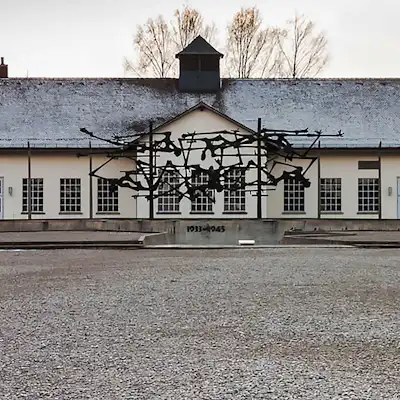
The International Memorial
Designed by Nandor Glid, a Yugoslavian artist and survivor of the camp, the International Memorial serves as a grim reminder of Nazi atrocities. Fence posts, ditches and barbed wire ensconced by human skeletons show the desperation of suicidal prisoners. Placed at the end is an urn with the ashes of unknown prisoners reading 'Never Again' in different languages.
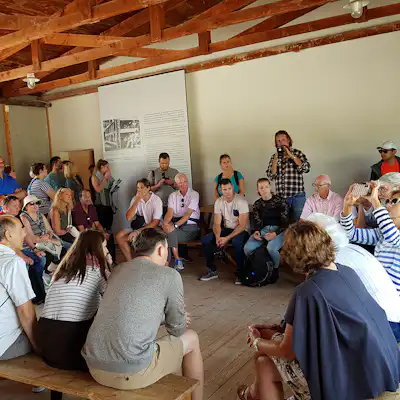
Maintenance Building
The Maintenance Building now houses photos and video exhibits of the memorial site, along with the personal effects of prisoners, adding an element of morbid reality to the place. One can also view the prisoner kitchen and baths, and the shunt room, the site of a most degrading experience for prisoners who entered the camp.
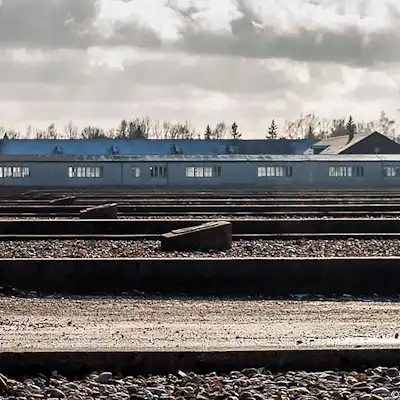
Roll Call Square
The roll call square saw the assembly of prisoners for hours together as they waited for their names to announced, twice every day, or for carrying out of punishments. The area was large enough to hold 50,000 people.
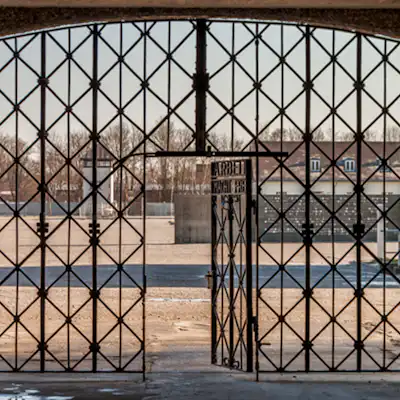
The Barracks
Only two of the old remains of barracks have been reconstructed for the memorial to showcase the strict life and regimen of the prisoners. The fact that the camp was equipped for 6000 prisoners but hosted 30000 prisoners at any point in time will give you an idea of the gross conditions.
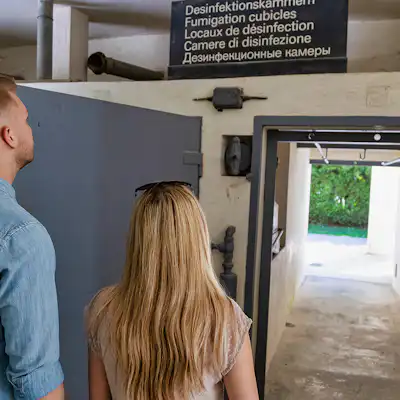
Prisoner Baths
This is where newly arrived prisoners had their heads shaved and were asked to shower. They were then asked to scavenge among piles of the remnants for their prison uniform. In some camps, this was where prisoners were gassed to death but in Dachau, a torture method called pole hanging was employed which left the victims with severe wrist and shoulder damage.
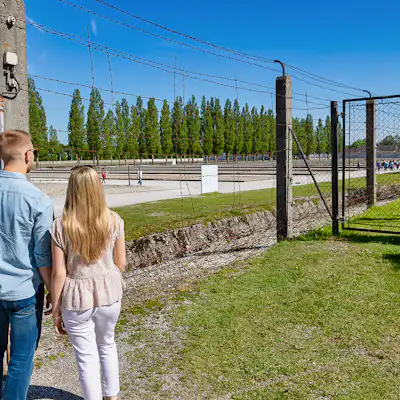
Camp Road
The Camp Road stretches from the Maintenance Building to the religious sites and crematoriums and was earlier structured by barracks on either side. The road features trees planted by the prisoners to beautify the place prior to a human rights inspection.
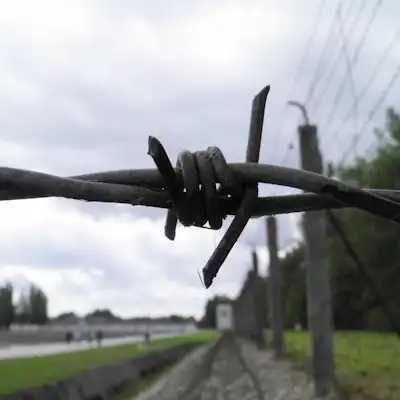
Crematorium
A look into the Dachau Concentration Camp Fact reveals that most of the crematorium ovens were operational day and night to dispose off corpses from the camps. On liberation day, American soldiers found masses of bodies piled up to be disposed - serving as a reminder of the mercilessness of Nazi persecution.
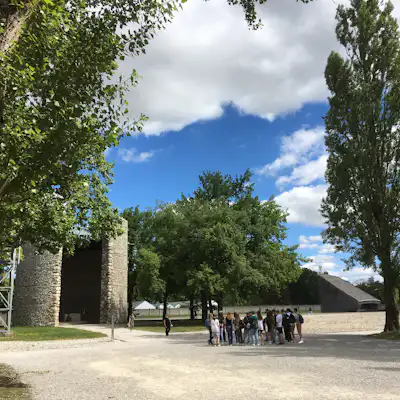
Religious Memorials
It's no surprise that this sorrowful a place has five religious memorials built at the back namely Mortal Agony of Christ Chapel, Carmelite Convent, Protestant Church of Reconciliation, Jewish Memorial, and Russian-Orthodox Chapel. Visitors can spend some moments of peace and pray for the souls of the tormented here.
Dachau Concentration Camp: The History
- The Dachau Concentration Camp is the first concentration camp built by the Nazis in 1933, immediately after they came in to power. The camp is also one of the last ones to be set free.
- After its construction, the Dachau Concentration Camp was feared among the enemies of Nazi, so much that there came a saying - "Lieber Herr Gott, mach mich stumm, Das ich nicht nach Dachau komm", translating to "Dear God, make me silent, That I may not come to Dachau".
- The Dachau Concentration Camp was not created as an extermination camp like like the Ausschwitz and Treblinka, however out of the 200,000 inmates, more than 40,000 died - either murdered or died after suffering from diseases.
- Majority of the prisoners in the camp were Polish.
- After the war, the camp became a prison for the very Nazi War criminals.
Dachau Concentration Camp: The Present
1960
The former Krematorium building is transformed into a temporary museum.
1965
A Memorial Site was established on the grounds of the former concentration camp on the initiative of the surviving prisoners, funded by the Bavarian state government. Later on, many more new exhibitions and memorials were opened on the site. Monuments and chapels were built inside to pay tributes to the imprisoned inmates owing to religious reasons.
2002
The former maintenance building houses the new permanent exhibition.
2005
The original entrance, known as the Jourhaus is open to the visitors.
2009
A new visitors centre was opened for visitors.
Plan Your Visit
Travelers visiting Munich often embark on a half-day trip to Dachau Concentration Camp. A trip here is an experience of a lifetime and not meant for the faint-hearted. Munich is fairly well connected to Dachau and one can easily book a guided tour or reach the site via public transport.
Distance
Dachau is located 30 km to the north west of Munich in the state of Bavaria in Germany.
Duration of travel
It takes around half an hour to get to Dachau Concentration Camp from Munich.
Entry
The only one entrance to the camp - the Jourhaus, or guardhouse, opens daily from 9 am to 5 pm. Entry is closed on December 24th.
Getting from Munich to Dachau
It is fairly easy to get to Dachau from Munich. There are multiple options to choose from.
By Train
It takes about 30 minutes to get to Dachau Concentration Camp from Munich if you take the S2 train from Munich’s Central Station (Hauptbahnhof). From the Dachau station, you can hop onto a bus to reach the memorial site.
By Bus
One needs to take Bus #726 from the train station at Dachau in the direction of Saubach Siedlung to go right to the camp.
By Car
While the drive is excellent and Munich is well-connected to Highways, it isn’t the best idea to take the car from Munich as parking may be a problem. There are some developmental works in progress on the visitor’s parking site which is expected to be completed in 2020.
Best Time to Visit the Dachau Concentration Camp
Dachau located in Munich, is a beautiful city to visit year-round, but there are certain times of year that are better than others. Since the camp is located outside, summer season - from June to August is best time to visit to avoid the chilly breeze. If you're looking to visit other places in Germany after the trip to the camp such as during the Oktoberfest celebrations, a popular time to visit, the rates for accommodations will be higher than usual.
If you're looking to avoid the crowds, consider visiting in spring or autumn instead. However, no matter when you choose to visit, make sure dress according to season as the Dachau Concentration Camp is in the open air.
Visiting The Dachau Concentration Camp Memorial Site With Kids
The Dachau Concentration Camp is a place where time has stood still - the emptiness evokes a piercing sadness that remains with you long after you’ve visited this place. It’s not the best idea to bring young kids here, but at the same time, it’s essential for older kids to understand the cruelty meted out to innocents, and to be more empathetic in life.
Where can I get Guided Tour Tickets for Dachau Concentration Camp?
A guided tour from Munich to Dachau Concentration Camp works best if you’d like to listen to commentary from a specially trained guide. With Headout’s Dachau Camp Guided Tour from Munich , you can visit the Nazi’s first concentration camp and also make a stop at Herbertshausen - which used to be a shooting range where the SS killed over 4,000 Soviet prisoners of war. The tour charges are inclusive of the professional guide, access to the sites, and transport in an air-conditioned coach along with a 20-minute documentary about Dachau.
Insider Tips
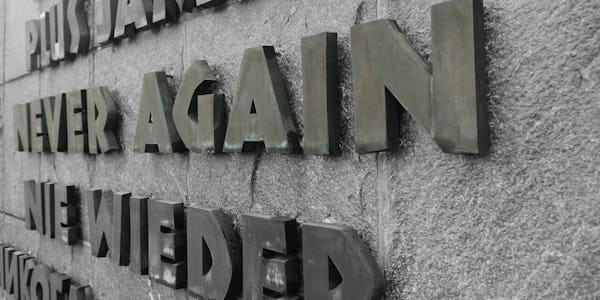
- If you have time in hand and wish to understand the depth of history surrounding the Dachau Concentration Camp Memorial Site, it’s a good idea to opt for a guided tour which usually begins around 11 AM and 1 PM daily. You can sign up for this on the spot, or take a guided tour from Munich to Dachau which will entrust you with a local historian guide.
- There is a movie presentation in various languages at the camp, but not all at the same time. Make sure you find out at what time your language preference will be shown. It makes sense to watch the movie first and be orientated about what to expect.
- A trip to Dachau can be an overwhelming experience, so it’s best to keep this day free from any other activities - you may just want to go back and reflect on everything you’ve seen.
- It’s a good idea to have a full meal before visiting Dachau - many people feel a loss of appetite once they’ve visited the concentration camp.
- Water is a must, so ensure that you keep yourself hydrated with tonnes of juice and water.
- Keep comfortable footwear for the Dachau Concentration Camp Tour as it's spread over a large area and you may end up walking quite a bit.
- If you travel to the memorial by car, please note that parking fees are €3 per car.
Dachau Concentration Camp Memorial Site Reviews
The Dachau Concentration Camp is a must do in Germany. It is a beautifully kept camp with many interactive activities, such as small phones that, when picked up, recite certain prisoners’ stories. Not recommended without a guide, that is a must as there is so much history that is not included un the audio tour, the audio tour does not do it justice. It is very well-preserved. The barracks, the gas chambers, the prison cells, all are very well kept with lots of facts about it. It is not recommended for kids under the age of 12, or anyone who cannot handle graphic images and stories.
There is a lot of walking to and in the camp, but it is worth it. It is a full-day activity due to how big the camp is and how much history is crammed into it, but it is a must do if in Germany. It is a little outside Munich, had to take a train and a bus to reach there. There is also a café there in case you get hungry before or after the tour. Overall, it is an awesome place to visit and should be visited by everyone.
K Anavi, Tripadvisor 2022
We took a day tour to Dachau from Munich. They did a fabulous job - our guide was extremely knowledgeable and her English was excellent so she was easy to understand. This is such an important place to visit both for it's historical significance and it's sad place in the story of mankind's brutal nature. Be forewarned - you'll see things that are incredibly disturbing even though, as it turns out, Dachau was not an extermination camp, though there was a significant amount of killing. We've all heard the stories of the brutality and inhumanity that occurred in these places and it is sobering to say the least to see where and how those things happened. Grey Line included a short side trip to nearby Nazi shooting range where thousands of Soviet POWs were slaughtered. It's all so incredible and important to remember. Highly recommended though clearly not suitable for anyone under 14 (the site's rule).
Doug , Tripadvisor 2022
Read what others have to say about the Dachau Concentration Camp Memorial Site on TripAdvisor.
FAQs: Dachau Concentration Camp Memorial Site
Traveling from Munich, the easiest way to reach the Memorial Site is by public transport. Take the S2 train from Munich in the direction of Dachau/Petershausen until you reach the Dachau station. The train ride takes approximately 25 minutes from Munich's Central Station (Hauptbahnhof).
Absolutely. 100%. You can't understand suffering, fear, perseverance, and you really can't understand the Holocaust until you've visited a concentration camp.
Admission is free. The camp offers audioguides and 30-minute or 2½-hour walking tours, or you can book an escorted coach tour from Munich.
Adolf Hitler became chancellor of Germany on January 30, 1933, and in March of that year, Heinrich Himmler announced the first Nazi concentration camp, which opened in the town of Dachau, just outside Munich, a major city in southern Germany.
It is not permitted to wear any article of clothing or symbols, whose manufacturing or sale is generally associated with right-wing extremist groups. to violate in any way the human dignity of others because of their origins, skin color or religion. to leave luggage unattended.


